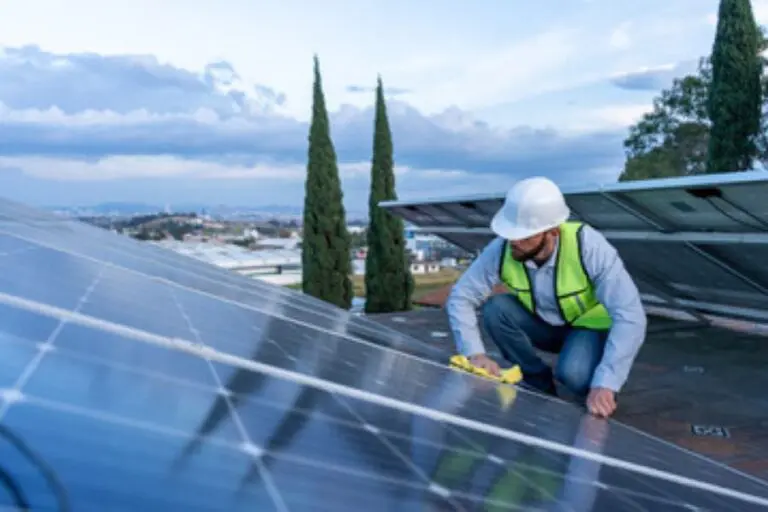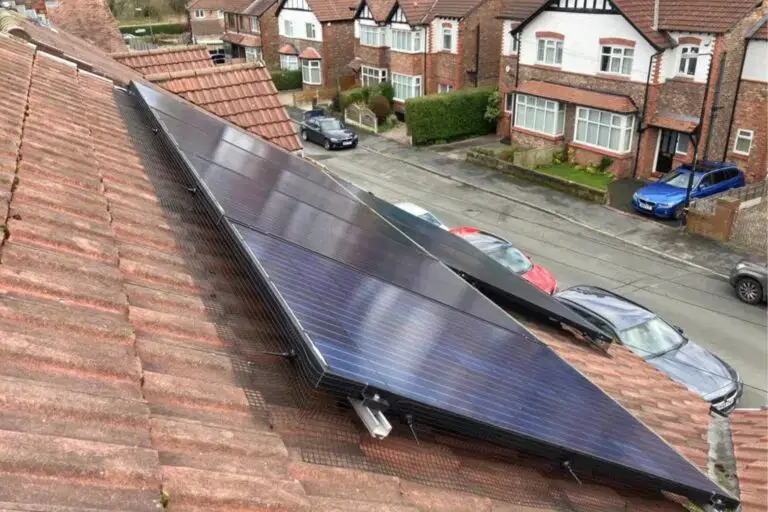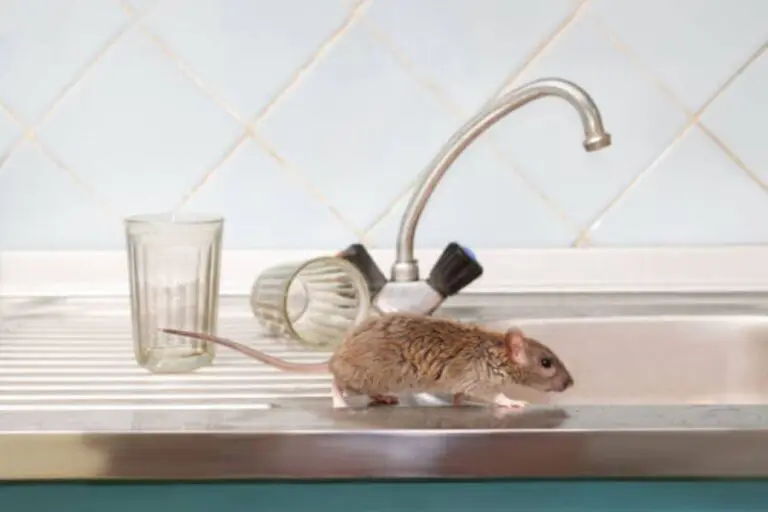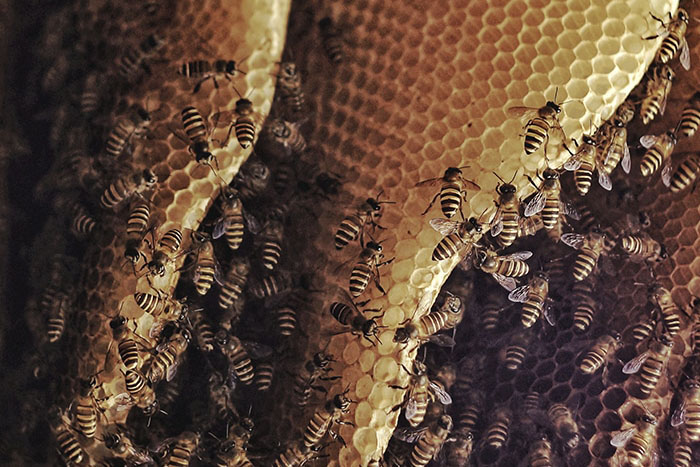The Causes & Prevention of Render Discolouration
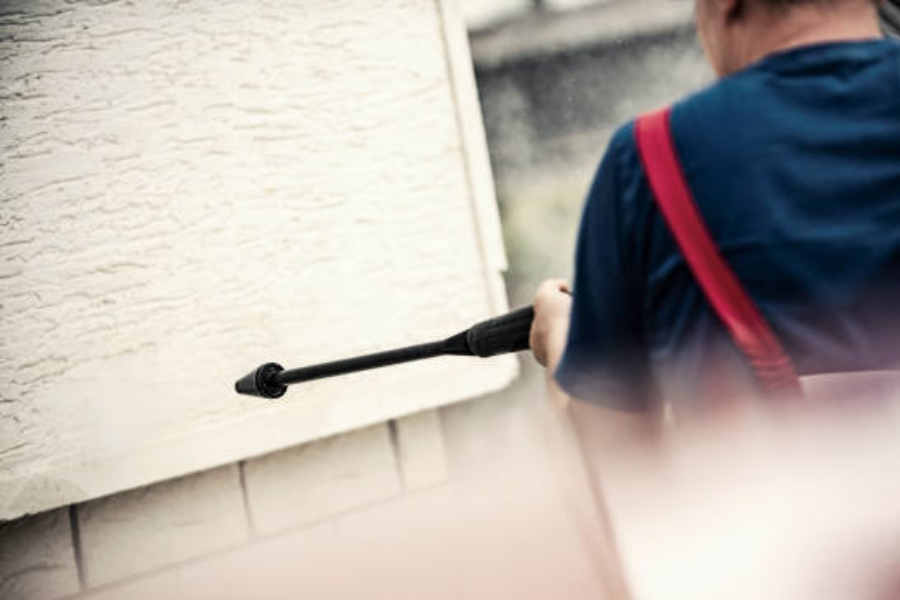
Render serves a protective and aesthetic function in modern construction, offering durability, weather resistance, and a smooth or textured finish to external walls. Despite its resilience, it has been observed that render is susceptible to various forms of discolouration over time. One of the most common and visually striking issues encountered is the appearance of a red hue on rendered surfaces. Chemical reactions, environmental conditions, material composition, and maintenance practices influence this phenomenon. Examining these factors in detail allows a clearer understanding of how to prevent and treat rendered discolouration.
Chemical Reactions Affecting Render
Among the primary causes of red discolouration in the render is the oxidation of iron-rich components within the render mix or the substrate beneath it. Certain construction materials naturally contain trace amounts of iron, which, when exposed to moisture and oxygen, undergo a chemical transformation known as oxidation. This process results in the formation of iron oxide, commonly recognised as rust, which can manifest as a reddish tint on the surface of the render.
The presence of soluble salts within the building materials further exacerbates this issue. When moisture infiltrates the render, it dissolves these salts, which then migrate to the surface and crystallise upon evaporation. In cases where the salts interact with iron deposits, the red staining can become more pronounced. Over time, the combination of these chemical processes can cause the render to appear increasingly discoloured, particularly in areas persistently exposed to damp conditions.
Environmental Factors Contributing to Render Discoloration
The environment plays a significant role in the longevity and appearance of the render. Humid climates, excessive rainfall, and temperature fluctuations contribute to the degradation of rendered surfaces. In areas with high atmospheric moisture, the likelihood of oxidation increases, as prolonged exposure to damp conditions accelerates the chemical reactions responsible for discoloration.
Furthermore, airborne pollutants and organic growths, such as algae and fungi, are commonly observed on rendered surfaces, particularly in shaded or poorly ventilated areas. Certain species of algae produce pigments that result in reddish staining, further complicating the issue of render discolouration. In regions where air pollution is prevalent, the accumulation of industrial pollutants can also contribute to staining, as these contaminants react with moisture and minerals within the render to form discolouration over time.
Material Quality and Application Techniques
It has been established that the quality of render materials and their application method significantly impact their resistance to discolouration. Inconsistencies in the mix composition, particularly when low-quality materials are used, may lead to an uneven distribution of minerals, increasing the likelihood of oxidation. Similarly, if the render is applied in excessively thick layers or inadequately cured, moisture retention within the material becomes a concern, exacerbating the risk of red staining.
The type of render selected for a project is also a determining factor. While durable, cement-based render is more porous than synthetic alternatives, making it more susceptible to moisture absorption. Lime render, traditionally used for historic and breathable structures, has a different chemical composition that reacts differently with environmental elements, potentially reducing the risk of iron oxidation. Acrylic and silicone-based render systems, incorporating water-resistant properties, offer enhanced protection against discolouration and staining.
Proper surface preparation is equally critical. Before the render application, substrates must be thoroughly cleaned and assessed for contaminants such as organic material, efflorescence, or residual construction debris. Failure to prepare the surface adequately may result in adhesion issues, leading to uneven moisture absorption and, consequently, an increased probability of staining.
Preventative Measures for Maintaining Render Appearance
Several preventative measures can mitigate the risk of render discolouration. High-quality sealants and water-repellent coatings have been widely recommended, as these products create a protective barrier against moisture infiltration. These coatings prevent water ingress and reduce the retention of pollutants and organic matter that contribute to staining.
Routine maintenance is another crucial aspect of render preservation. Regular cleaning using low-pressure washing techniques and pH-neutral detergents helps remove surface contaminants before they can cause permanent staining. However, excessive use of aggressive cleaning methods, such as high-pressure washing, can damage the surface of the render, making it more porous and susceptible to further discolouration.
In instances where red staining has already developed, specialised treatments may be required. Iron-stain removers formulated to neutralise oxidation can be effective in reversing discolouration. Additionally, biocidal treatments targeting algae and fungal growths help eliminate organic sources of staining. In cases where extensive staining has occurred, re-rendering or applying a fresh coat of mineral paint designed for rendered surfaces may be necessary to restore the original appearance.
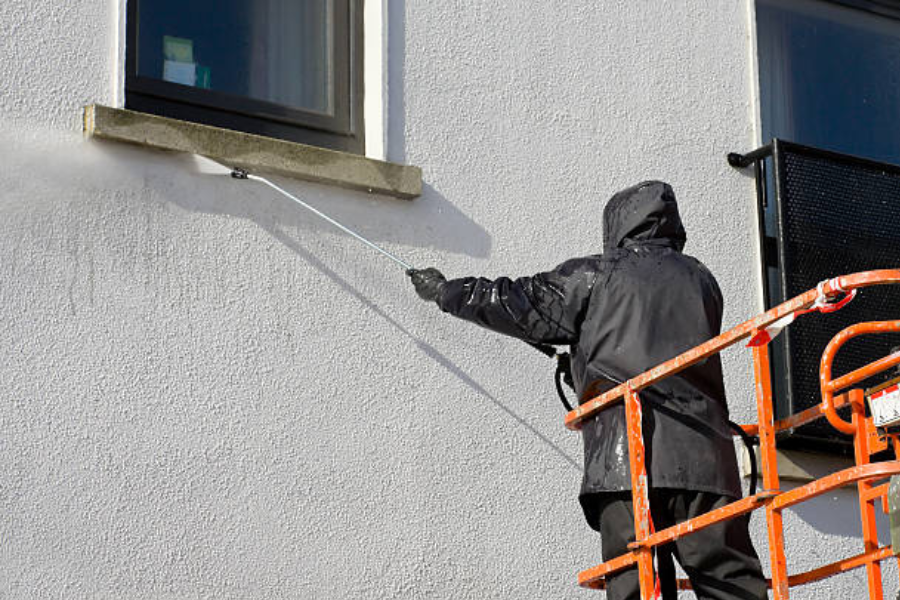
Long-Term Strategies for Preserving Render Integrity
A long-term strategy for maintaining renderings involves careful material selection, proper application techniques, and ongoing upkeep. Good drainage around a property should not be overlooked, as improper water management can significantly contribute to moisture retention in the render. Guttering systems, downpipes, and surface water drainage should be regularly inspected to prevent excess water from running down exterior walls.
Furthermore, property orientation and architectural design considerations influence the rate of render degradation. South-facing walls, which receive more sunlight, tend to dry faster and experience lower moisture retention levels. In contrast, north-facing walls, which remain in the shade for extended periods, are more vulnerable to organic staining and oxidation. By understanding these factors, additional protective measures, such as strategic landscaping or the application of UV-resistant coatings, can be implemented to prolong the life of the render.
Emerging technologies in render formulations are also being developed to combat discolouration. Advanced render systems now incorporate self-cleaning properties, where hydrophobic (water-repellent) materials prevent dirt and biological growth from adhering to the surface. These innovations are increasingly being integrated into modern construction practices, ensuring that render maintains its appearance with minimal intervention.
A combination of scientific understanding, material advancements, and strategic maintenance can preserve the render’s longevity and aesthetic quality. By implementing best practices in application, protection, and cleaning, the challenges associated with render discolouration can be effectively managed, ensuring that rendered surfaces retain their intended appearance and structural integrity for years.
In addition to material selection and preventative treatments, external environmental monitoring plays a crucial role in ensuring the long-term preservation of the render. The effects of climate exposure, air quality, and seasonal variations must be accounted for when assessing the vulnerability of rendered surfaces. Areas exposed to high levels of air pollution, particularly those near industrial zones or busy road networks, are more prone to discolouration due to particulates and chemical pollutants accumulation. These contaminants can react with the minerals in the render, making staining progressively harder to remove.
Microbial growth is another persistent factor that affects render durability. Algal and fungal spores, carried through the air, settle on exterior surfaces, particularly in damp and shaded areas. Once established, these organisms alter the aesthetic quality of render and contribute to surface degradation by trapping moisture and encouraging further biological colonisation. The implementation of biocidal coatings, designed to inhibit microbial growth, has proven to be an effective solution for reducing the occurrence of organic staining. These treatments create an inhospitable environment for spores to develop, extending the time between required cleaning cycles.
Furthermore, the role of render permeability in moisture regulation must be carefully considered. While modern hydrophobic coatings offer superior water resistance, it is essential to balance this protection with the breathability of the substrate. Render that lacks sufficient permeability may trap moisture within the structure, leading to internal dampness and subsequent material deterioration. In traditional construction, lime-based render has been preferred for its ability to allow moisture vapour to escape, thereby reducing the risk of trapped condensation. In contrast, synthetic render systems often incorporate advanced microporous technology, enabling moisture management while maintaining resistance to external contaminants.
Technological advancements in render applications continue to evolve, with innovations to improve durability and reduce maintenance requirements. Self-cleaning render systems incorporating titanium dioxide nanoparticles have gained prominence due to their ability to break down organic matter upon exposure to ultraviolet (UV) light. This photocatalytic reaction accelerates the decomposition of pollutants and biological growths, preventing the accumulation of discolouration and maintaining the render’s original appearance for extended periods.
Professional inspection and scheduled maintenance should also not be overlooked. Routine assessments by industry professionals allow for the early detection of issues such as microcracking, efflorescence, or uneven weathering. If left unaddressed, minor defects can lead to more significant problems, including water infiltration and structural instability. A structured maintenance plan, incorporating periodic cleaning, protective treatments, and minor repairs, ensures that the render remains in optimal condition and continues to provide both functional and aesthetic benefits.
In contemporary construction, sustainability considerations are increasingly influencing material choices and treatment methods for render. The shift toward eco-friendly formulations has led to the development of low-VOC (volatile organic compound) coatings and mineral-based renders that minimise environmental impact while offering enhanced longevity. Additionally, integrating natural pigments in render formulations has been explored as an alternative to synthetic colourants, reducing the risk of chemical degradation and discolouration over time.
The influence of architectural design on render performance must also be acknowledged. Building facades incorporating overhangs, cladding, or rain-screen systems provide additional protection against direct exposure to rain and pollutants. These architectural features help mitigate the effects of weathering by reducing the frequency and intensity of moisture contact, thereby prolonging the lifespan of the render.
As industry standards evolve, manufacturers and construction professionals continue to focus on developing more resilient and adaptive render solutions. With ongoing advancements in material science, protective coatings, and sustainable building practices, the future of render maintenance and preservation is increasingly geared toward efficiency, longevity, and environmental responsibility. By integrating scientific research, practical maintenance strategies, and innovative technologies, the challenges associated with render discolouration and degradation can be effectively managed, ensuring that rendered surfaces maintain their integrity and visual appeal for years.
The Impact of Regional Climate on Render Longevity
Different geographical regions present unique challenges for maintaining render, as climatic conditions dictate the rate of weathering, moisture absorption, and microbial growth. In coastal areas, high salt levels in the air contribute to accelerated surface degradation, leading to the potential crystallisation of salt deposits within the render. These deposits, known as salt efflorescence, can weaken the structural integrity of the surface and create unsightly white or discoloured patches. To mitigate these effects, treatments with salt-resistant additives and regular rinsing are recommended to prevent salt accumulation.
In contrast, regions that experience prolonged periods of heavy rainfall and humidity are more susceptible to algae, moss, and lichen growth on rendered surfaces. Retaining moisture in shaded areas encourages biological staining, which, if left unchecked, can deteriorate the surface over time. To counteract this, anti-fungal and biocidal coatings are applied to ensure adequate drainage around the base of rendered walls to prevent prolonged dampness.
Colder climates introduce additional challenges, particularly the risk of freeze-thaw damage. When water infiltrates the porous surface of render and subsequently freezes, expansion occurs, leading to microcracks that worsen over time. These cracks allow further moisture penetration, exacerbating structural damage and increasing the likelihood of surface staining. Render systems with enhanced flexibility and freeze-resistant properties are better suited for such environments, as they accommodate slight expansions and contractions without compromising surface integrity.
The Role of Extreme Weather Conditions on Render Durability
Severe weather conditions such as heavy storms, hail, and prolonged sun exposure also affect render performance. Strong winds carrying airborne debris can lead to surface abrasion, causing premature wear and exposing underlying layers to moisture. Meanwhile, hail impact can create indentations that trap dirt and organic material, further contributing to discolouration and microbial growth.
Conversely, excessive sun exposure can cause fading and uneven weathering, particularly for pigmented render systems. Ultraviolet (UV) radiation accelerates the breakdown of certain colour pigments, leading to a dull or patchy appearance. To combat this, UV-resistant coatings and high-quality mineral-based pigments are recommended to maintain colour stability over time.
Economic Considerations for Render Maintenance
From a financial perspective, investing in high-quality render solutions and preventative treatments can significantly reduce long-term maintenance costs. While budget-friendly render applications may seem cost-effective initially, they often require more frequent repairs and treatments due to inferior durability. Higher-end silicone or acrylic-based renders, although more expensive at the outset, offer superior weather resistance, self-cleaning properties, and longer lifespans, ultimately proving more economical over time.
The cost of render upkeep can be substantial for commercial and large-scale residential properties. Implementing a structured maintenance plan, including periodic inspections and scheduled cleaning, ensures that minor issues are addressed before they escalate into costly repairs. Property owners and facility managers are encouraged to factor in render preservation within their long-term maintenance budgets to avoid unexpected deterioration-related expenses.
Future Trends in Render Technology and Sustainability
The evolution of render technology is increasingly focused on sustainability, efficiency, and enhanced durability. Self-cleaning renders incorporating hydrophobic and photocatalytic properties are gaining popularity, reducing the need for frequent manual cleaning while minimising environmental impact. These advanced systems break down organic pollutants and repel dirt, ensuring that rendered surfaces remain clean for extended periods.
Furthermore, the shift toward eco-friendly construction materials has led to developing low-carbon and recycled-content renders. These formulations maintain high performance while reducing environmental impact, aligning with modern sustainability goals. As regulations around eco-conscious building practices continue evolving, manufacturers are expected to introduce even more innovative solutions prioritising longevity and ecological responsibility.
Final Thoughts on Long-Term Render Preservation
Consider regional climate factors, environmental stressors, and financial implications to take a well-rounded approach to render maintenance. Continuous advancements in material science and sustainable building practices further reinforce the importance of investing in high-quality render solutions and proactive upkeep. Through careful selection, protective treatments, and periodic maintenance, rendered surfaces can retain their structural integrity and aesthetic appeal for many years, ensuring both functional and financial benefits for property owners.

